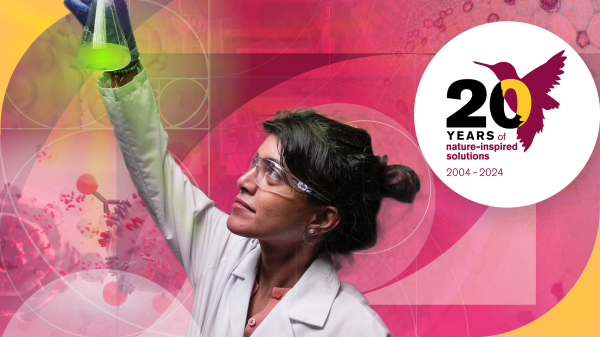A team of biomedical engineering students at Arizona State University last month won a gold medal in an international synthetic biology competition.
Their accomplishment? Engineering microalgae to bind arsenic in water, reduce it and sequester the toxic contamination.
“We won a gold medal for excellence in the design, development and execution of our project!” said team co-captain Emma Lieberman.
While more than 99% of Arizonans who obtain drinking water from public water systems are served water which meet the Safe Drinking Water Act arsenic standards, arsenic is a major concern and cost for small public water systems and the 5% of Arizonans who get their water from private wells.
Prolonged exposure to arsenic can cause nausea, vomiting, negative effects on cognitive development, cancer and death.
The ASU team developed a strain of mutant algae that significantly captures arsenic in tandem with a filter system.
The team of seven was led by Lieberman and Maggie Cook, both seniors majoring in biomedical engineering.
They entered the International Genetically Engineered Machine (iGem) competition, vying with 351 other teams.
Cook started a club called DIY Bio in summer 2020.
“We did this sort of shark tank competition, where we had like three teams of probably six students generate some crazy idea they wanted to address and then present on it in a more technical manner, get some background research done,” Cook said. “And then we had a competition with some faculty, and judges picked a project.”
Cook and Lieberman, along with team members Joel Joseph, Jared Lee-Kin, Priyati Sharma, Tohma Taniguchi and Sonakshi Sharma, worked from December through March, fundraising, getting organized, getting biosafety approvals and other preliminary work.
Work in the lab began in June and continued right up to the October deadline. Judging took place in November.
Their reaction when they found out they won gold? “Shocked,” both Cook and Lieberman said.
“We initially had our sights on silver and then I sort of decided let's go for gold,” Lieberman said.
Their award-winning work cannot be introduced to the public because of strict rules about releasing genetically modified organisms into the environment. (Any approval would have to go through the governor and state Legislature.)
Funding for the competition was provided by university President Michael Crow.
“This is a project that should continue,” Lieberman said. “Next year, we hope to have an ASU team again. Maggie and I will no longer be leading it, however,” adding that the new team is just starting recruitment and has not picked a topic yet.
Students interested in joining the team can apply here.
Top image courtesy of Pixabay
More Science and technology

ASU-led Southwest Advanced Prototyping Hub awarded $21.3M for 2nd year of funding for microelectronics projects
The Southwest Advanced Prototyping (SWAP) Hub, led by Arizona State University, has been awarded $21.3 million in Year 2 funding under the CHIPS and Science Act to continue its work advancing the…

Celebrating '20 Years of Discovery' at the Biodesign Institute
Editor’s note: The Biodesign Institute at Arizona State University wraps up its 20th anniversary with the sixth and final installment of its "20 Years of Discovery" series. Each story highlights…

Student research supports semiconductor sustainability
As microelectronics have become an increasingly essential part of modern society, greenhouse gas emissions, which are associated with their use and manufacture, have increased in tandem.…
